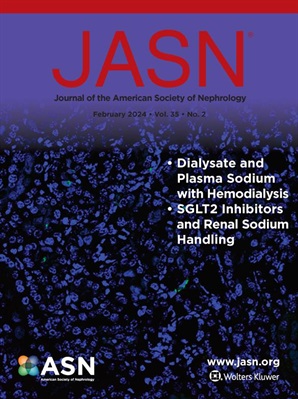Preimplantation Histopathologic Assessment of Deceased Donor Kidneys: Recommendations from the Banff Time-Zero Biopsy Working Group.
IF 10.3
1区 医学
Q1 UROLOGY & NEPHROLOGY
引用次数: 0
Abstract
Transplantation using kidneys from deceased donors with marginal clinical characteristics is increasing to maximize access to transplant. Preimplantation biopsies of such kidneys are often obtained to determine the degree of chronic changes as an objective supplement to donor clinical based assessment of organ quality, particularly in the United States. There is conflicting evidence and heterogenous practice about how preimplantation biopsies should be performed, interpreted, and incorporated into organ disposition decisions. In 2022, The Banff Foundation for Allograft Pathology tasked its Time-Zero Biopsy Working Group with reviewing existing literature on preimplantation biopsies to prepare consensus recommendations on situations in which these biopsies should be performed and suggest best practices for improving reproducibility of biopsy readings. This workgroup report tabulates the Working Group's recommendations and identifies gaps that need to be filled to advance preimplantation biopsy clinical practice in donor selection. The major recommendations are that a preimplantation biopsy should only be performed when clinical assessment tools indicate that the kidney is unsuitable for utilization, that the clinical and preimplantation biopsy findings should be interpreted together for organ utilization decisions, and that digital whole slide images be promoted to facilitate setting up reporting networks of nephropathologists. Additional prospective studies using predictive modeling approaches are needed to optimize preimplantation biopsy criteria, sampling, interpretation, and incorporation into kidney allocation decisions.已故供体肾脏植入前的组织病理学评估:班夫零时间活检工作组的建议。
使用具有边缘临床特征的已故供者肾脏进行移植正在增加,以最大限度地获得移植。这种肾脏的植入前活检通常用于确定慢性变化的程度,作为基于供体器官质量临床评估的客观补充,特别是在美国。关于植入前活检应该如何进行、解释和纳入器官处置决定,存在相互矛盾的证据和不同的实践。2022年,班夫同种异体移植病理学基金会(Banff Foundation for Allograft Pathology)责成其零时间活检工作组(Time-Zero Biopsy Working Group)审查有关植入前活检的现有文献,就应在何种情况下进行活检提出共识建议,并提出提高活检读数可重复性的最佳做法。本工作组报告列出了工作组的建议,并确定了需要填补的空白,以推进植入前活检在供体选择中的临床实践。主要建议是,只有当临床评估工具表明肾脏不适合使用时,才应进行植入前活检,临床和植入前活检结果应一起解释,以决定器官的使用,并推广数字整片图像,以方便建立肾脏病理学家的报告网络。需要使用预测建模方法的其他前瞻性研究来优化植入前活检标准、采样、解释和纳入肾脏分配决策。
本文章由计算机程序翻译,如有差异,请以英文原文为准。
求助全文
约1分钟内获得全文
求助全文
来源期刊
CiteScore
22.40
自引率
2.90%
发文量
492
审稿时长
3-8 weeks
期刊介绍:
The Journal of the American Society of Nephrology (JASN) stands as the preeminent kidney journal globally, offering an exceptional synthesis of cutting-edge basic research, clinical epidemiology, meta-analysis, and relevant editorial content. Representing a comprehensive resource, JASN encompasses clinical research, editorials distilling key findings, perspectives, and timely reviews.
Editorials are skillfully crafted to elucidate the essential insights of the parent article, while JASN actively encourages the submission of Letters to the Editor discussing recently published articles. The reviews featured in JASN are consistently erudite and comprehensive, providing thorough coverage of respective fields. Since its inception in July 1990, JASN has been a monthly publication.
JASN publishes original research reports and editorial content across a spectrum of basic and clinical science relevant to the broad discipline of nephrology. Topics covered include renal cell biology, developmental biology of the kidney, genetics of kidney disease, cell and transport physiology, hemodynamics and vascular regulation, mechanisms of blood pressure regulation, renal immunology, kidney pathology, pathophysiology of kidney diseases, nephrolithiasis, clinical nephrology (including dialysis and transplantation), and hypertension. Furthermore, articles addressing healthcare policy and care delivery issues relevant to nephrology are warmly welcomed.

 求助内容:
求助内容: 应助结果提醒方式:
应助结果提醒方式:


